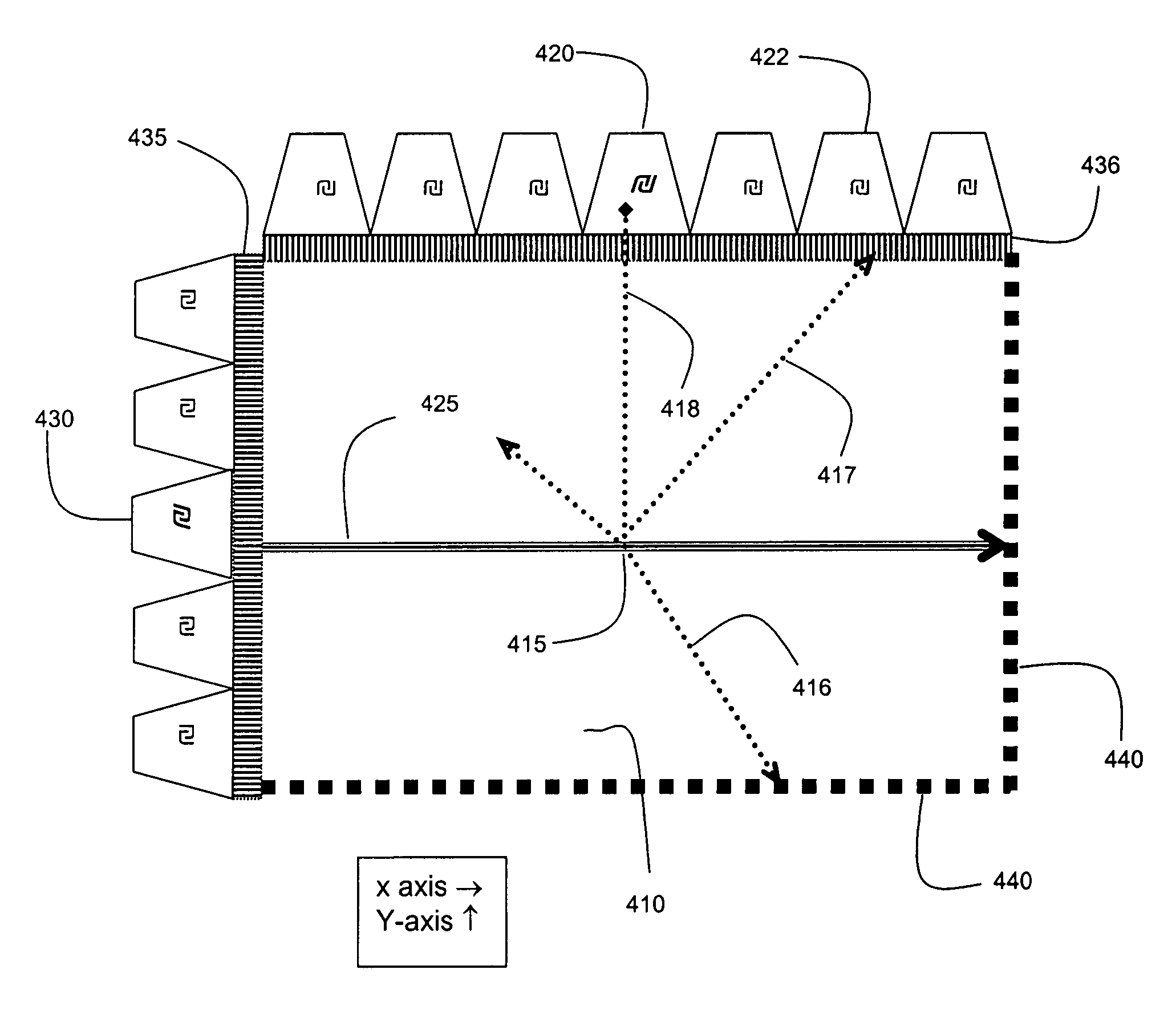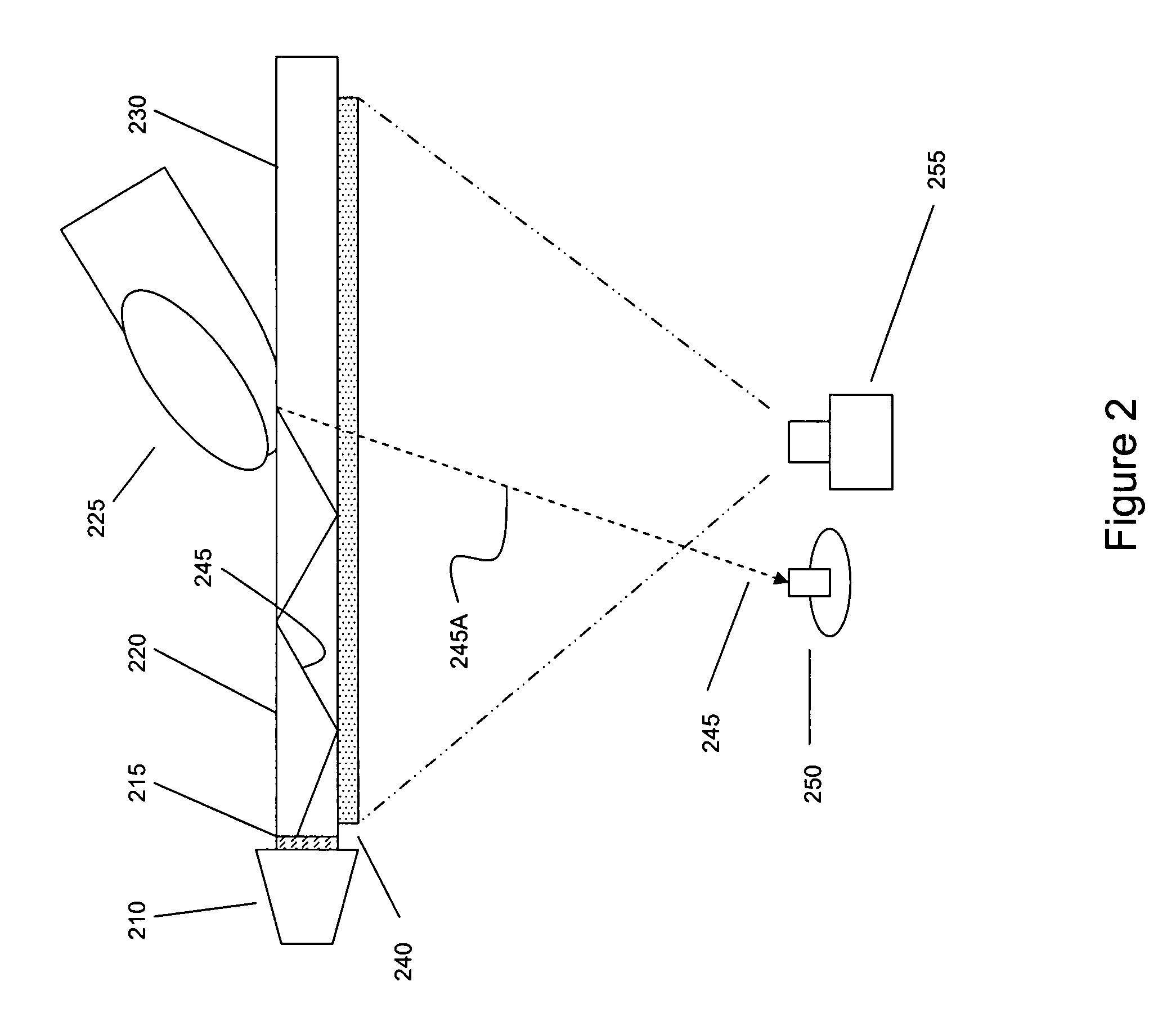Photonic touch screen apparatus and method of use
a touch screen and touch screen technology, applied in the field of display screen input devices, can solve the problems of impracticality of devices, slow mouse or light pen placement, and difficulty in short placement of mouse or light pen for high-speed applications
- Summary
- Abstract
- Description
- Claims
- Application Information
AI Technical Summary
Problems solved by technology
Method used
Image
Examples
Embodiment Construction
[0018]Referring now to the drawings wherein like reference characters relate to like parts there is shown one basic exemplary embodiment of a touchscreen panel system 1 for providing position input to a computer display. Element 25 is an LCD or other computer display screen, such as an OLED display. The screen receives its images from a computer system 60. Element 20 is a transparent panel, which is flooded with light on its edge 16 by a lighting element 17. A physical input stimulus 10, which can be a finger or other pointing implement, is shown touching a silicone sheet 15 located over the element 20. The sheet 15 is in optical interface contact with the panel 20. Due to the effect of Frustrated Total Internal Reflection (FTIR), a light ray 30 is refracted out of the panel 20 where the stimulus 10 touches the panel. The silicone sheet 15 indents to interface more closely to the touch panel 20 creating a more uniform response to the stimulus 10, so that different sized pointers and...
PUM
 Login to View More
Login to View More Abstract
Description
Claims
Application Information
 Login to View More
Login to View More - R&D
- Intellectual Property
- Life Sciences
- Materials
- Tech Scout
- Unparalleled Data Quality
- Higher Quality Content
- 60% Fewer Hallucinations
Browse by: Latest US Patents, China's latest patents, Technical Efficacy Thesaurus, Application Domain, Technology Topic, Popular Technical Reports.
© 2025 PatSnap. All rights reserved.Legal|Privacy policy|Modern Slavery Act Transparency Statement|Sitemap|About US| Contact US: help@patsnap.com



